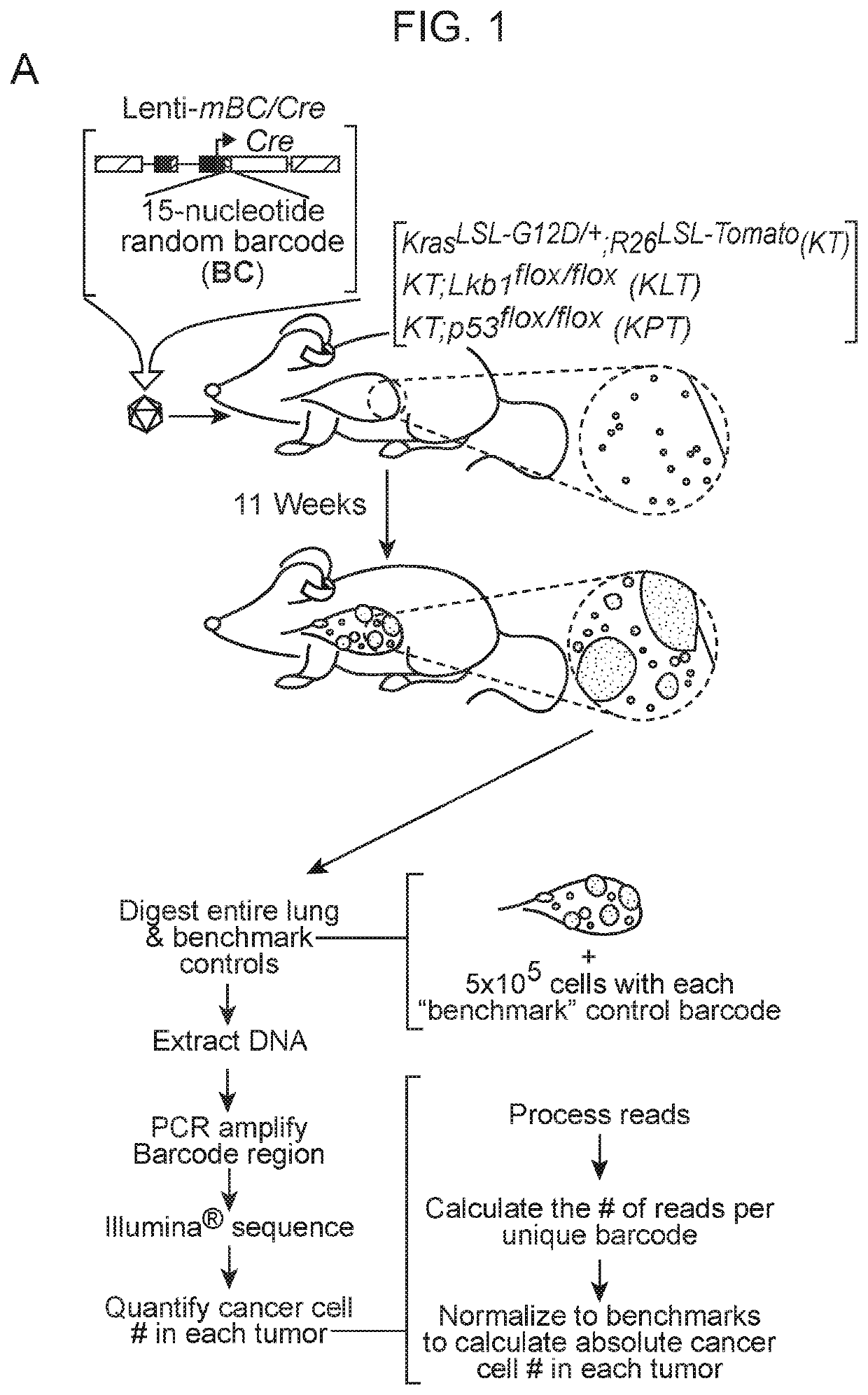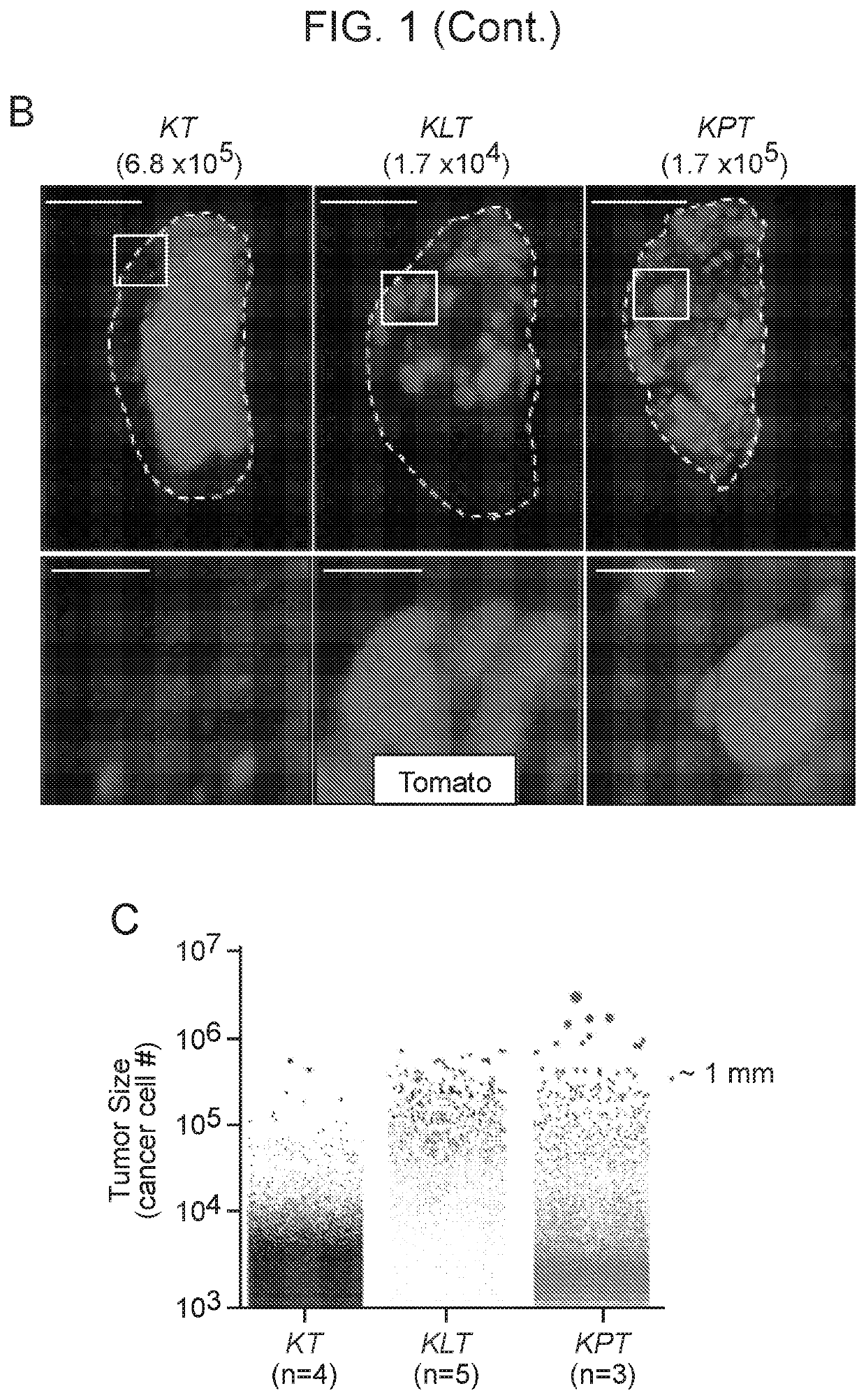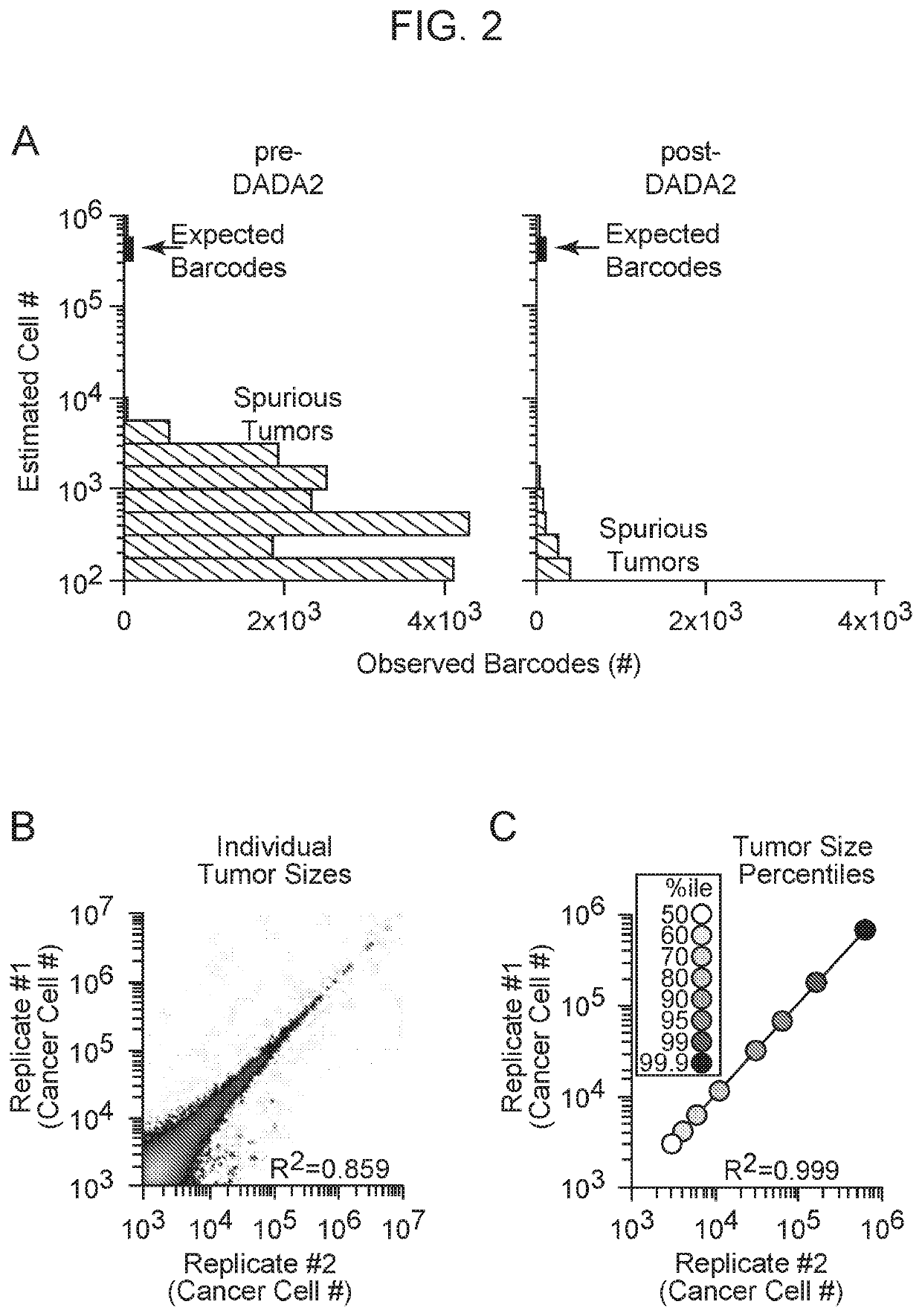Compositions and methods for multiplexed quantitative analysis of cell lineages
a cell lineage and quantitative analysis technology, applied in the field of multiplexed quantitative analysis of cell lineages, can solve the problems of limiting the ability of these systems to provide insight, limiting their application to the analysis of genes with the most dramatic effects, and lack of rigorous quantitative systems to analyze gene function in vivo. , to achieve the effect of facilitating the analysis of gene function, reducing the difficulty of recombination and recombination, and reducing the difficulty of recomb
- Summary
- Abstract
- Description
- Claims
- Application Information
AI Technical Summary
Benefits of technology
Problems solved by technology
Method used
Image
Examples
example 1
A Quantitative and Multiplexed Approach to Uncover the Fitness Landscape of Tumor Suppression In Vivo
[0143]Cancer growth and progression are multi-stage, stochastic evolutionary processes. While cancer genome sequencing has been instrumental in identifying the genomic alterations that occur in human tumors, the consequences of these alterations on tumor growth within native tissues remains largely unexplored. Genetically engineered mouse models of human cancer enable the study of tumor growth in vivo, but the lack of methods to quantify the resulting tumor sizes in a precise and scalable manner has limited our ability to understand the magnitude and the mode of action of individual tumor suppressor genes. Here, we present a method that integrates tumor barcoding with ultra-deep barcode sequencing (Tuba-seq) to interrogate tumor suppressor function in mouse models of human cancer. Tuba-seq uncovers different distributions of tumor sizes in three archetypal genotypes of lung tumors. B...
example 2
ed Quantitative Analysis of Oncogenic Variants In Vivo
[0319]Large-scale genomic analyses of human cancers have catalogued somatic point mutations thought to initiate tumor development and sustain cancer growth. However, determining the functional significance of specific alterations remains a major bottleneck in our understanding of the genetic determinants of cancer. Here, we present a platform that integrates multiplexed AAV / Cas9-mediated homology-directed repair (HDR) with DNA barcoding and high-throughput sequencing to simultaneously investigate multiple genomic alterations in de novo cancers in mice. Using this approach, we introduced a barcoded library of non-synonymous mutations into hotspot codons 12 and 13 of Kras in adult somatic cells to initiate tumors in the lung, pancreas, and muscle. High-throughput sequencing of barcoded KrasHDR alleles from bulk lung and pancreas uncovered surprising diversity in Kras variant oncogenicity. Rapid, cost-effective, and quantitative app...
example 3
ss Landscape of Tumor Suppression in Lung Adenocarcinoma In Vivo
[0390]The functional impact of most genomic alterations found in cancer, alone or in combination, remains largely unknown. With experiments described herein, integration of tumor barcoding, CRISPR / Cas9-mediated genome editing, and ultra-deep barcode sequencing is demonstrated for interrogating pairwise combinations of tumor suppressor alterations in autochthonous mouse models of human lung adenocarcinoma. The tumor suppressive effects of 31 common lung adenocarcinoma genotypes are mapped, revealing a rugged landscape of context-dependence and differential effect strengths.
Results
[0391]Cancer growth is largely the consequence of multiple, cooperative genomic alterations. Cancer genome sequencing has catalogued a multitude of alterations within human cancers, however the combinatorial effects of these alterations on tumor growth is largely unknown. Most putative drivers are altered in less than ten percent of tumors, sugg...
PUM
| Property | Measurement | Unit |
|---|---|---|
| Size | aaaaa | aaaaa |
| Recombination enthalpy | aaaaa | aaaaa |
Abstract
Description
Claims
Application Information
 Login to View More
Login to View More - R&D
- Intellectual Property
- Life Sciences
- Materials
- Tech Scout
- Unparalleled Data Quality
- Higher Quality Content
- 60% Fewer Hallucinations
Browse by: Latest US Patents, China's latest patents, Technical Efficacy Thesaurus, Application Domain, Technology Topic, Popular Technical Reports.
© 2025 PatSnap. All rights reserved.Legal|Privacy policy|Modern Slavery Act Transparency Statement|Sitemap|About US| Contact US: help@patsnap.com



